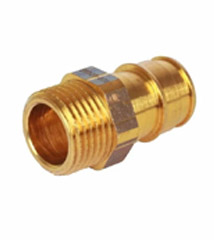- Customized Steel Engineers Pvt ltd
D501/502, Plot No.122, Gora Gandhi Palace,
8th Khetwadi Back Road, Khemraj Kishandas Road,
Mumbai-400004.
- Office Timeing
- Mon - Fri: 09:00 - 18:00
Hydraulics Fittings
Hydraulics Fittings
Hydraulic fittings come in a wide range of types and applications. They are used to connect the hydraulic hose to components like hydraulic cylinders, pipes, tubes, or different types of hydraulic hoses in hydraulic systems.
The different types of hydraulic fittings allow the fluid to flow, change its direction, divert, or mix. These fittings should be capable of creating a tight seal and preventing leakage in the application. These fittings are widely used in hydraulic-powered applications including plumbing, robotics, assembly lines, and heavy equipment.
Selection criteria & points of attention
The following criteria should be considered before selecting the correct hydraulic fitting types for your application:
- Size: The internal and external diameter of the fittings are two important sizes to consider. These diameters of the fitting should be compatible with the hose diameter. Over or under-sized fittings can cause leakage or the connection to fail.
- Material: The material of the hydraulic fitting should be compatible with the hydraulic fluid and with the operating environment. The most commonly used fitting materials are brass, aluminum, steel, or stainless steel. NBR (Nitrile) O-rings are the most widely used sealing materials.
- Temperature: The hydraulic fittings should be suitable for your temperature range.
- Pressure: The hydraulic fittings must be suitable for your pressure range, including the pressure spikes. Operating beyond this range can cause damage to the fittings.
- Application: The type of application also determines the fitting type to be used. Tee- or cross- fittings are used for mixing or distribution application.
- Assembly: If the hydraulic system requires frequent connecting and disconnecting of the hose or tube, the hydraulic quick-connect fittings can be used. Similarly, hydraulic compression fittings can be used to remove the need for welding or soldering of the fitting. It uses a compression nut to tighten against the ferrule creating a very tight seal. It can be used in areas with high temperatures as welded joints can leak in such environments.
Common applications
Hydraulic fittings are used for piping and tubing with hydraulic hoses in the following applications:
- Factory applications like assembly lines, presses, robotics, hydraulic power units
- Construction and mining equipment
- Agricultural equipment
- Plumbing applications
- Oil and gas industry
Function
There are a vast number of types of fittings installed in hydraulic systems which perform different functions. The most common types are described in the table below:
Fittings which extend or terminate pipe lengths: |
||
Adapter |
Connects two dissimilar pipes to each other via solvent welding, soldering, or threading. |
|
Coupling |
Connects two similar pipes to each other via solvent welding, soldering, or threading. |
|
Union |
Couplings which can be disconnected without cutting. Their connection (typically threading) allows for easy release. |
|
Cap |
Covers the end of a section, attaching to a male connection via a weld, thread, solvent, or solder. |
|
Plug |
Closes off the end of a system, attaching to a female connection via a weld, thread, solvent, or solder. |
|
Fittings which add or change direction: |
||
Elbow |
Changes the direction flow to various angles. The most common angles are 90° and 45°, but 22.5° elbows are also made. |
|
Tee |
Connects three flow sections in a T-shaped intersection. This allows fluid flow to be combined or split apart. |
|
Cross |
4-way connections, providing one inlet and three outlets or vice versa. Crosses are less steady than tees, and can generate high stress on the vessel with temperature changes. |
|
Fittings which connect pipes of smaller size: |
||
Reducer |
Includes all connections which connect between two or more vessels of different sizes. |
|
Fittings which provide special connections or functions: |
||
Nipple |
Allows two separate fittings to be connected at each end. Standard nipples are straight with male threads on both ends. |
|
Valve |
Connects vessels together with the addition of a valve for the control of flow. For more information on types of valves, visit the Industrial Valves Selection Guide on GlobalSpec. |
|












